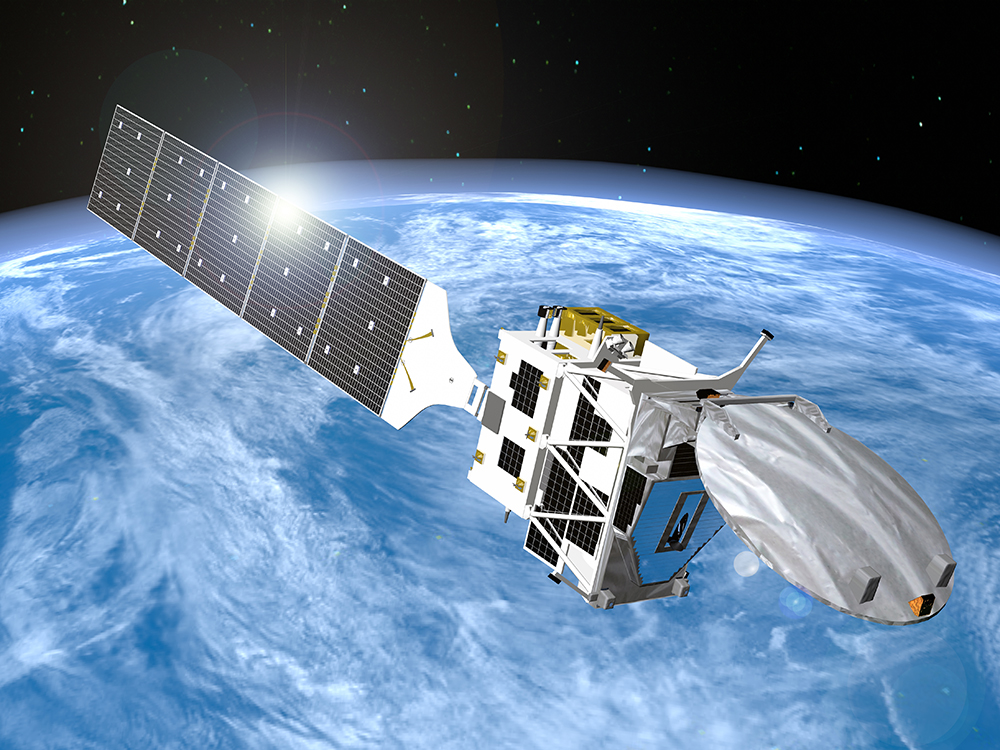The accuracy of global warming predictions can be improved by incorporating them into numerical forecast models, specifically weather models, climate models, and domain models. Based on the evaluation by EarthCARE, numerical forecast models will be improved through reflection (data assimilation) in the respective numerical forecast models. Improved models will realize measurements with an accuracy of 10 W/m2 for the radiation budget in a 10 km2 region in the upper atmosphere. The ultimate goal of the EarthCARE mission is to make measurements with an accuracy of 10 W/m for the radiation budget in the upper atmosphere in the 10 km region.
- Top
- Mission
- Mission objective
Objectives of the EarthCARE Mission
Against this background, the Earth Cloud Aerosol Radiation Mission (EarthCARE), a joint Earth observation mission between Japan and the European Space Agency (ESA), was launched.
The objective of the EarthCARE mission is to improve the accuracy of global warming prediction using satellite remote sensing technology to globally measure the three-dimensional structure of clouds and aerosols from space to elucidate the interaction between clouds and aerosols, which is a major uncertainty factor in climate change prediction models, and their radiative effects. This will contribute to improving the accuracy of global warming prediction.
The joint Europe–Japan Mission Advisory Group has established the following objectives of the mission:

Japan's Efforts to Predict Climate Change in the International Community
Understanding, assessing, and predicting climate change is one of the areas of societal benefit in the 10-Year Implementation Plan for Earth Observation adopted at the Earth Observation Summit and is listed as one of Japan's priorities. However, due to the large prediction errors generated by numerical climate models (see the links below), it is impossible to predict long-term climate change that can contribute to the decision-making of environmental policies.
Clouds and aerosols of recognized importance
The global three-dimensional structure of clouds and aerosols has been recognized by the World Meteorological Organization (WMO)/International Climate Research Program (WCRP) and the Intergovernmental Panel on Climate Change (IPCC) as an important physical quantity to monitor climate change. The importance of the GEOSS has been internationally recognized as the source of observation requirements for the Global Earth Observation System of Systems (GEOSS) required by the Global Earth Observation Decade Implementation Plan.
Although ground-based and satellite observations of clouds and aerosols have been conducted, more global observational data is needed due to their large spatio-temporal variability and three-dimensional structure, including vertical distribution. Data for concentrated observation and evaluation of physical quantities is insufficient for observational and scientific understanding and would be effective in improving the accuracy of numerical climate models. This is expected to significantly effect the improvement of understanding climate change and the accuracy of predictions.
What type of observations need be made to achieve these mission objectives? We will introduce them in the next section.
Details regarding the goals of the EarthCARE mission are defined in the Mission Requirements Document (MRD) by the joint EU-Japan Mission Advisory Group.